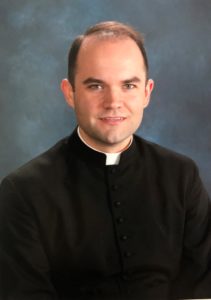Spirit and truth

Father Aaron Williams
By Father Aaron Williams
Fifty-five years ago, when the Second Vatican Council promulgated the Constitution on the Sacred Liturgy (Sacrosanctum Concilium), there was a great move in the Church for an increased emphasis on the role of Sacred Scripture in the lives of Catholics. The Council, at that time, called for a reworking of the lectionary readings in order to allow for a wider selection of scripture to be read in the Mass. In order to meet this demand, a three-year cycle of readings was developed and a third reading was added to the Mass on Sundays and Feast days — thus allowing for a much wider exposure of Sacred Scripture to the faithful at weekend Masses.
But, I am not sure if many Catholics understand the structure of the modern lectionary. Besides simply giving us more varied readings, the new lectionary also gives a sort of systematic approach to reading the Bible, by demonstrating both the way that the New Testament is a fulfillment of the Old, and also by providing a community with a more continuous reading of various passages. So, I thought it would be helpful to give insight into this structure, as well as provide a few comments on other ways the Scriptures may be opened to us in all our liturgical gatherings.
Generally speaking, the Gospel readings of the lectionary during the three-year cycle are taken from the Gospel of Matthew (in year A), Mark (in year B), and Luke (in year C). The Gospel of John, as is tradition in the Church, is reserved to major feasts of the Church — except during the summer of year B when six weeks are devoted to the reading of the ‘Bread of Life’ discourse from John’s Gospel (as we just completed a few weeks ago).
During Ordinary Time, these passages from the Gospel are read semi-continuously. In other words, they generally flow one story to the next as laid out in the Gospels, so that if we are paying attention we will hear the full story over the thirty-four weeks of Ordinary time in the Church’s liturgical year. During this time as well, the first reading at Sunday Masses is selected to as to comment on the Gospel. In this way, the Gospel demonstrates the fulfillment of the passage chosen as the first reading. The psalm of this Mass is chosen to comment on the first reading. For this reason, when I prepare my homilies, I always read the Gospel first, then the first reading, and then the psalm.
The second reading is always a passage from an Epistle (a New Testament letter). During Ordinary Time, these passages are also read semi-continuously. That means that the second reading is selected not to comment on any other reading that day, but to simply be read from start to finish as its own separate text. This essentially means that a priest could choose for three years to focus just on the Gospel and first reading, and then for the next three years to focus on the epistles — providing a six year rotation of readings. (That’s one term as a pastor!)
In the other seasons of the year, all the readings are selected thematically in order to represent a unified expression of the mystery of that particular feast or season.
Another area where Sacred Scripture is used in the liturgy, which is less-commonly seen in parishes today, are the texts chosen as antiphons. An antiphon is a short passage of scripture which is traditionally sung at various moments of the Mass. The Roman Missal gives antiphons for each Mass at the Entrance and at Communion. The chant editions published by the Church also give antiphons at the offertory. Some parishes may read these texts at daily Mass, but they are intended to be sung — and many settings of these texts are available today from various publishers (even for free).
The benefit of these texts is that often they are chosen to comment on the particular mystery being celebrated, or to reflect the readings. In this way, they are sort of an extension of the lectionary. During Ordinary time, for example, the Communion Antiphons on Sunday are selected to comment on the Gospel passage read that day. Sometimes they are even direct excerpts in order to remind us that the presence of Christ and his works which we heard in scripture is now made manifest to us in the Real Presence of Our Lord in the Eucharist.
The Entrance Antiphons are beautiful passages given to introduce the feast. Thus, on Christmas morning we hear: “A child is born for us, and a son is given to us” (Is., 9:5). Or, on Easter Sunday: “I have risen, and I am with you still, alleluia. You have laid your hand upon me, alleluia, too wonderful for me, this knowledge, alleluia, alleluia.” (cf. Ps. 139:18, 5-6).
(Father Aaron Williams is the parochial vicar at Greenville St. Joseph Parish.)
